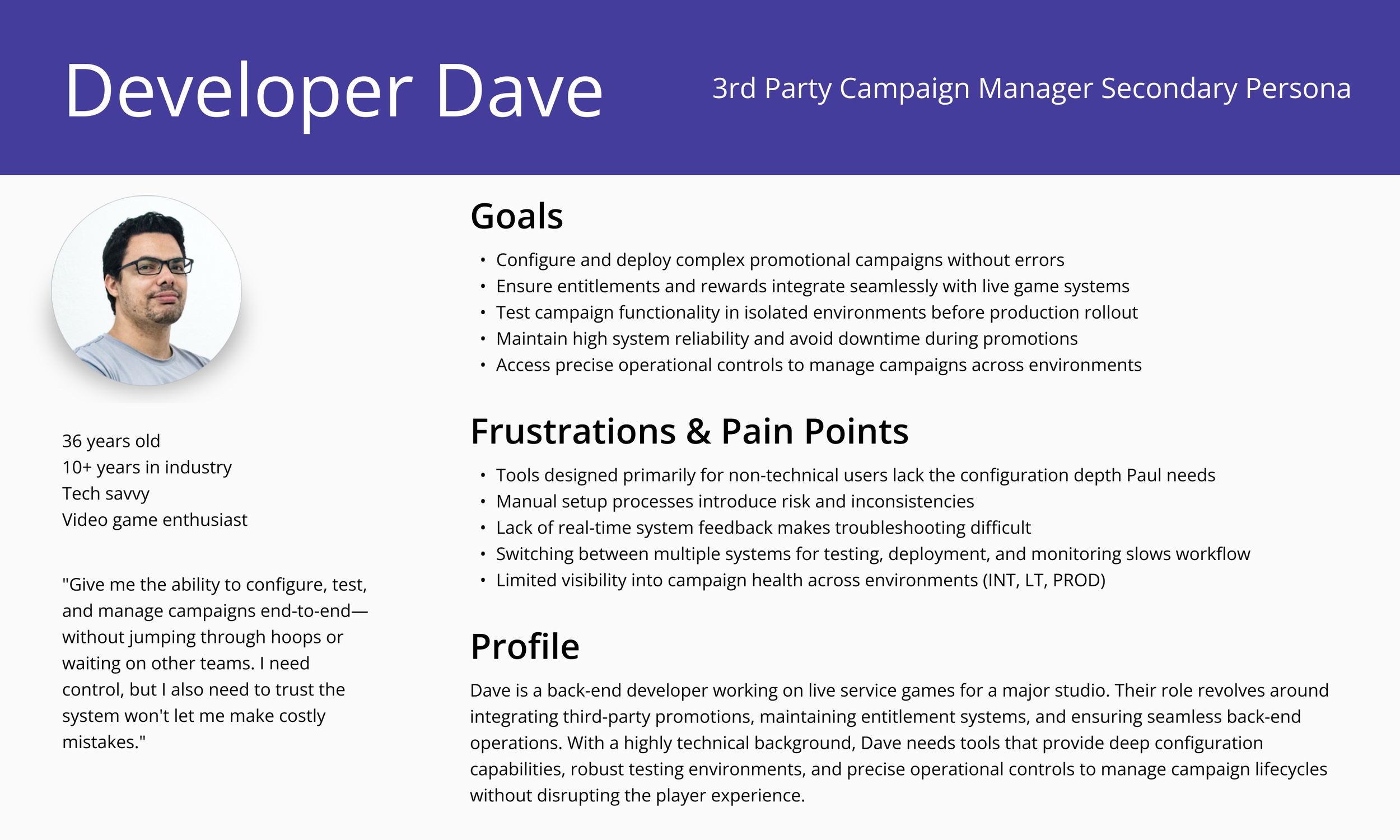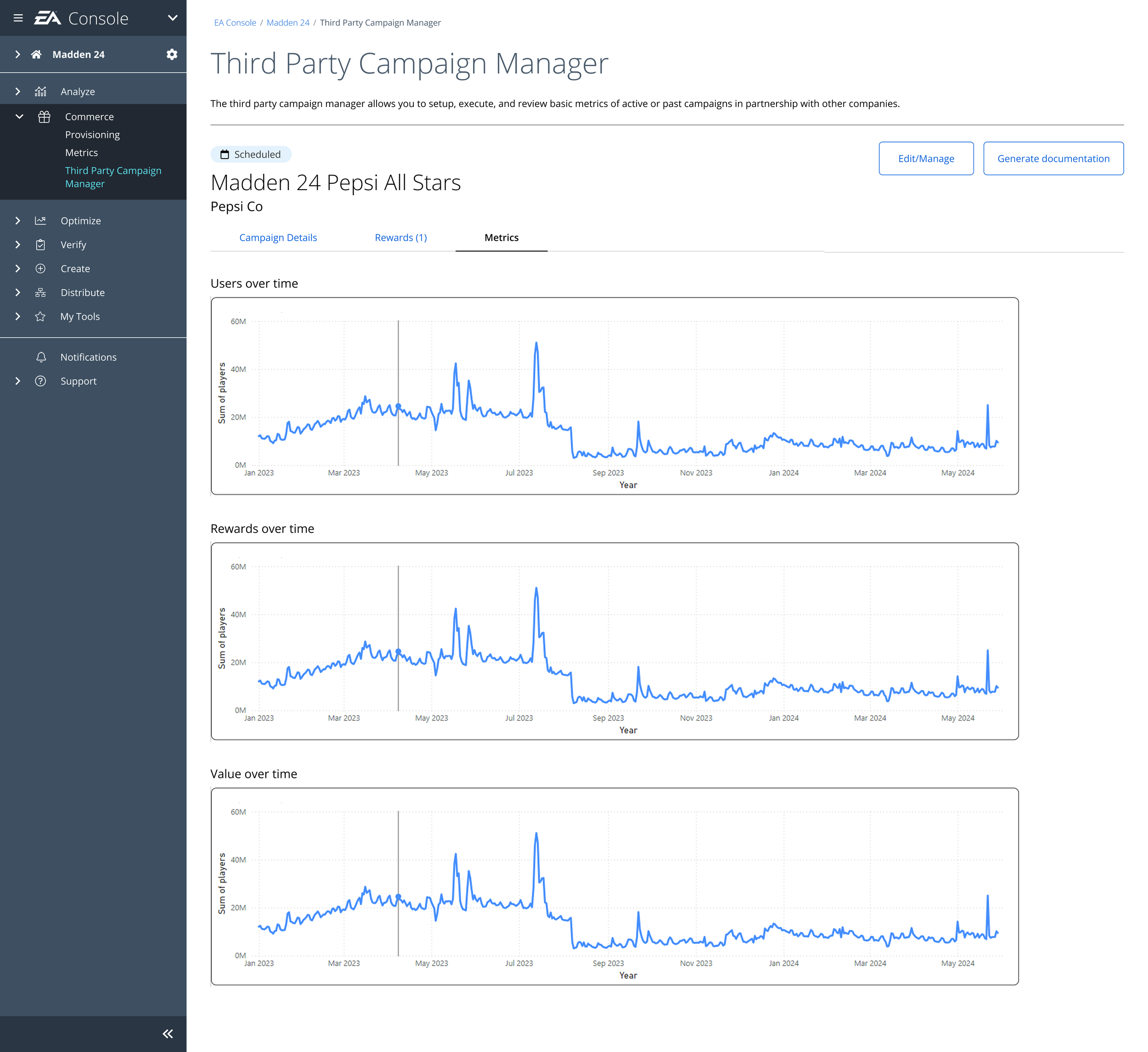Problem: Manual, opaque, support-dependent campaign setup slowed launches and created inconsistency
Stakes: Delays, errors, no centralized visibility, mixed user skill levels
My role: Led UX from discovery to prototypes to usability testing in Figma; defined dashboard, wizard, and ops controls
Outcome: Drastically reduced manual support, accelerated launches, real-time transparency; validated by testing.
The UX Challenge
Build an intuitive, role-inclusive tool that handles complex configurations and compliance, usable by both non-technical producers and deeply technical developers.
What was broken
Heavy manual processes = delays and inconsistency
Setup depended on EADP support; studios lacked autonomy
No centralized visibility into status / health
Who I designed for
Producers & Brand Marketers: need clear steps and high-level status
Developers & Live Ops: need detailed config, environment controls, and testing
Early working concept of the user flow needed for the tool.
My role & scope
Lead UX from discovery to prototypes to usability testing in Figma. Defined the information architecture, dashboard, step-by-step creation flow, and operational controls.
Solution at a glance
1) Centralized Campaign Dashboard
All campaigns (past/present/future) with real-time INT/LT/PROD status and filters by partner, type, or status, so anyone can see what’s live and what’s next
2) Step-by-Step Creation Wizard
Guided setup that adapts to user expertise; supports partner product bundling and direct entitlement via IDP, with partner selection/onboarding integrated
3) Operational Controls
Pause, resume, extend, or end campaigns across environments, with confirmations to prevent errors
4) Built-in Metrics
Studios can see reach, rewards delivered, and value derived… closing the loop from setup to impact
Campaign manager example from Hubspot
Research & iteration
Stakeholder interviews across producers, devs, live-ops, and brand marketers exposed confusion over steps, “is this complete?” anxiety, and the need for real-time visibility
Competitive scan highlighted gaps in customization, role-specific views, and status feedback
Figma prototyping + usability testing drove changes to status signals, navigation, and confirmations.
Key design decisions (and why)
Surface environments prominently (INT/LT/PROD) so non-technical partners can read deployment state at a glance
Wizard over free-form forms to match mixed expertise and reduce configuration errors.
Guardrails in ops controls (visual confirmations) to prevent high-impact mistakes
Inline metrics so success is visible without a separate detour to business intelligence
Outcomes & impact
Studios self-serve campaign setup = far less manual EADP support needed
Faster launches thanks to guided setup and clearer readiness signals
Real-time transparency and validation feedback reduced uncertainty across roles
Scalable foundation for EA’s evolving campaign operations
Usability testing showed higher confidence and simplicity
Reflection
I translated a high-friction, support-dependent process into an intuitive, scalable platform that fits both non-technical and technical users, shifting control to studios and giving leadership the visibility they lack
Next steps
Instrument and monitor qualitative / quantitative signals; evolve role-specific views and expand guardrails as new campaign types and partners come online.





